#pict.
Text

a summer nymph frolicking among the flowers 🌿💜
#artists on tumblr#digital art#digital painting#digital illustration#nature art#flowers#original art#sapphic#nudity#judilyart#my art#the design of the character was inspired by the painting a young daughter of the picts!
10K notes
·
View notes
Text
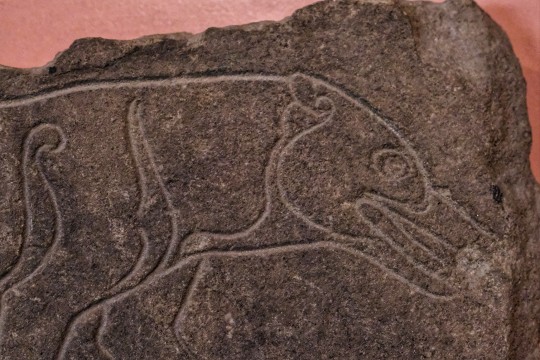

The Pictish Wolf Stone, Stittenham, Ardross, Inverness Museum and Gallery, Scotland
#pictish stones#pict#picts#pictish#Pictish wolf#wolf stone#Pictish art#archaeology#symbols#ancient living#ancient craft#ancient culture#Scotland#wolf#beast
7K notes
·
View notes
Text
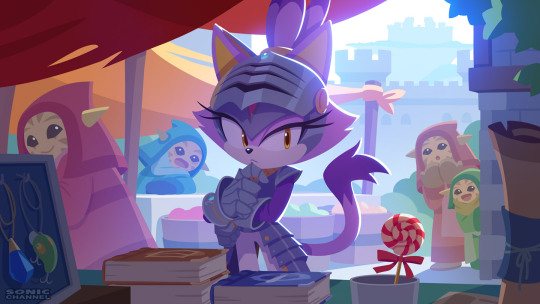
A castle town bustling with the morning sun in the tranquil spring sunshine 🏰
Sir Percival, one of the Knights of the Round Table, is browsing in a stall for travel supplies 🤔
The common people were excited by the sudden visit of the nobleman, wondering what he wanted from him…
Starting tomorrow #Golden Week! Are you fully prepared?
May the knight and everyone else have a wonderful start to their journey! 😉
#sonicpict
1K notes
·
View notes
Text

pkmn SV / Mi Tesoro(私の宝物)
ポストカードになる予定
#pict#pokemon#ポケモンsv#carmine#ゼイユ#kieran pokemon#スグリ#ペパー#ネモ#penny pokemon#nemona#arven pokemon#pokemon sv
1K notes
·
View notes
Text

This month's Sonic Pict from SEGA of Japan features Ray the Flying Squirrel enjoying the white snow and autumn leaves in Press Garden; and made a portrait of his friend, Mighty the Armadillo.
#ray the flying squirrel#mighty the armadillo#press garden zone#sonic mania#sonic pict#sonic channel#sega japan#sonic the hedgehog#sonic#sega#sonic news
2K notes
·
View notes
Text
The Evil Little Hairy Cave People of Europe in Pulp Fiction

From the 1900s to the 1940s, there was a trendy theme in occult and horror stories that the explanation for widespread European legends of fairies, brownies, pixies, leprechauns and other malicious little people, was that they were a hereditary racial memory of the extremely small non-human, hairy stone age original inhabitants of Europe, who still survive well into modern times in caves and barrows below the earth. Envious of being displaced on the surface, these weird creatures, adapted to the darkness of living underground and unable to withstand the sun, still mean mischief and occasionally go out at night to capture someone.... usually an attractive woman....to take to their dark caves for human sacrifice.
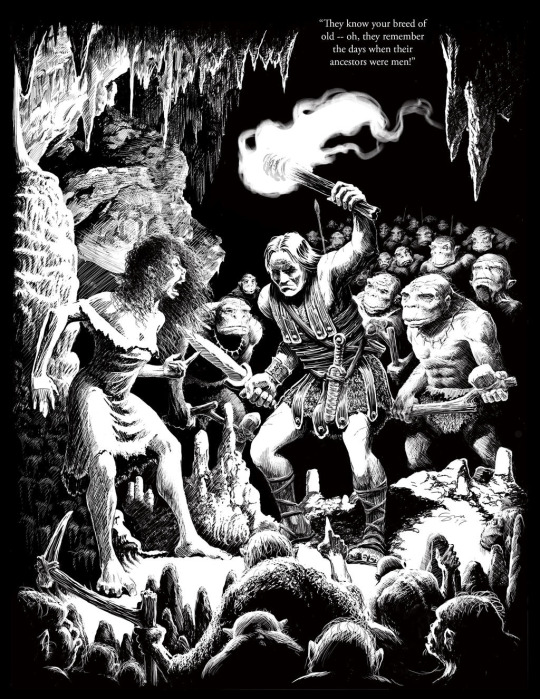
Displaced by the arrival of Indo-European language speakers at the dawn of the Bronze Age, these original, not quite human stone age people of Europe were driven deep underground into caves and barrows below the earth, where they went mad, adapted to the darkness and acquired a fear of daylight, became extremely inbred, in some cases acquired widespread albinism. It is these strange little people who gave the descendants of Europeans a haunting racial dread of places below the earth like mines and caves, and it also is these strange, hairy troglodytes who originally built the uncanny and mysterious menhir, fairy rings, and stone age structures of England, Scotland, and Ireland that predate the coming of the Celts and Romans.
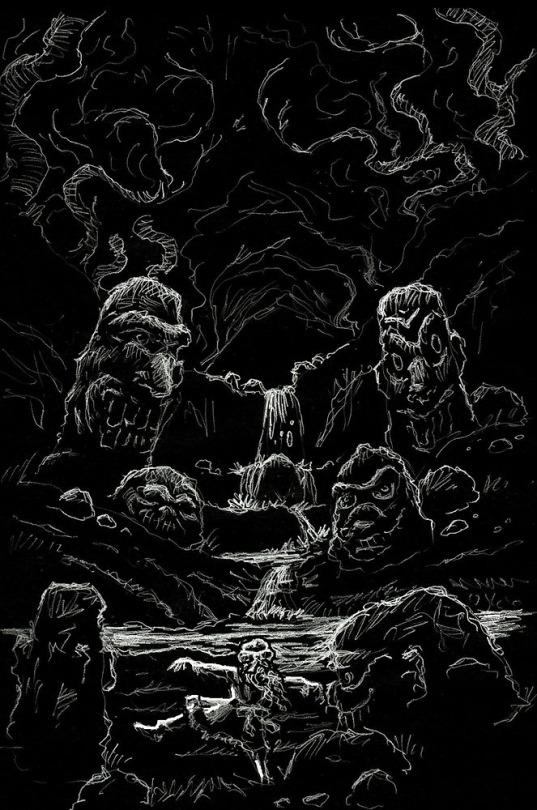
In some cases, these evil troglodytes are usually identified with the mysterious Picts, the pre-Celtic stone age inhabitants of the British Isles. In some cases, they are identified with the Basque people of Spain, best known as the inventors of Jai Alai, and the oldest people in Europe who speak a unique language unrelated to any in the world.
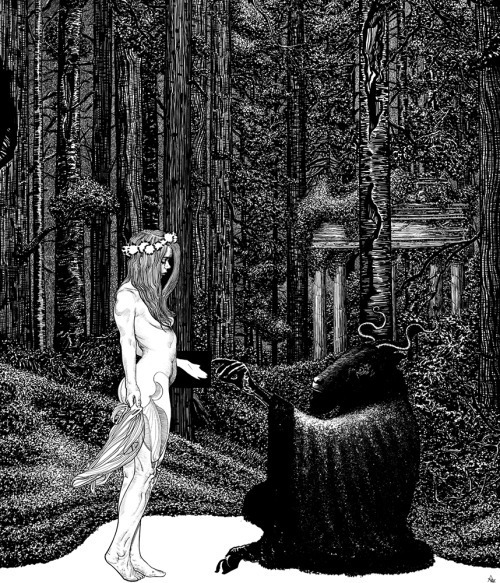
The original codifier of this trend was Arthur Machen, a horror writer who is less remembered than his contemporary, Henry James, but who may be the best horror writer in the generations between Poe on the one end and Lovecraft/CL Moore/Clark Ashton Smith on the other. His story, "the White People" from 1904 (a reference to their strange cave albinism) was a twisted Alice in Wonderland with a girl who is irresistibly attracted to dark pre-Roman stone age ruins and who is eventually pulled underground.
In addition to being a great horror writer, Arthur Machen was a member of the Hermetic Society of the Golden Dawn, an occult organization, and was often seen at the Isis-Urania Temple in London. Many of his works have secretive occult knowledge.
H.P. Lovecraft in particular always pointed out Arthur Machen as his single biggest inspiration, though he combined Machen's dread and occultism with Abraham Merritt's sense of fear of the cosmic unknown, seen in "Dwellers in the Mirage" and "People of the Pit."

Another and scarier example of this trend would be "No Man's Land," a story by John Buchan, a Scotsman fascinated by paganism and horror, who often wrote stories of horrific discoveries and evil rites on the Scottish moors. He is often reduced to being described as a "Scottish Ghost Story" writer, a painfully reductivist description as in his career, Buchan wrote a lot of thrillers, detective, and adventure stories as well. In later life, he was appointed Governor General of Canada, meaning he may be the first head of state to be a horror writer.
It was Buchan who first identified the cave creatures with the Picts, something that another Weird Tales writer decades later, Robert E. Howard, would roll with in the 1920s.

Howard is a very identifiable kind of modern person you often see on the internet: a guy who talks tough, but who was terrified to leave his small town. He created manly man, tough guy heroes like Conan the Barbarian, Kull, and El Borak, but he himself never left his mother's house. It's no wonder he got along well with his fellow Weird Tales writer and weird shut in, HP Lovecraft. With 1920s Weird Tales writers, despite your admiration for their incredible talent, you also can't help but laugh at them a little, a feeling you also apply to a lot of Victorians, who achieved incredible things, but who are often closet cases and cranks who died virgins ("Chinese" Gordon comes to mind, as does Immelmann).
With Howard, his obsession with the Picts and the stone age cave dwelling people of Europe started with an unpublished manuscript where at a dinner party, a man gets knocked out and regresses to his past life in the Bronze Age, where he remembers the earliest contact between modern humans and the original inhabitants of the British Isles, the evil darkskinned Picts. This is a mix of both the "little cave people" story and another cliche at the time, "the stone age past life regression novel," another turn of the century cliche.
Still with the Picts on his mind, Howard would later create Bran Mak Morn, a Pict chieftain, who predated Kull and Conan as his Celtic caveman muscle hero. Howard was of Irish descent and proudly anti-Colonial and anti-British, with his Roman Empire and Civilized Kingdoms as a stand in for the British and other Empires, which he viewed as rapacious and humbug, a view shared by his greatest inspiration, Talbot Mundy. His "Worms of the Earth" gets to the heart of why these little cave people scare us so much: they remind us that we live on land that is impossibly ancient and we don't fully understand at all.
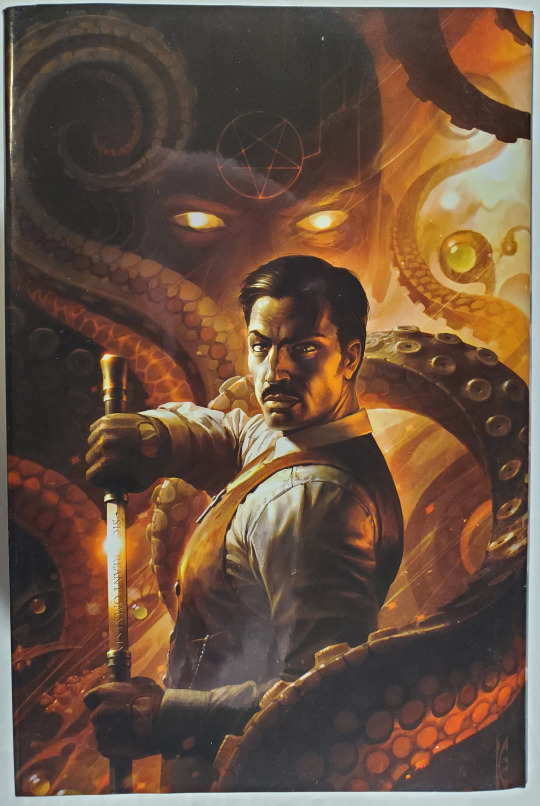
It was another Weird Tales Writer a decade later who wrote one of the last stories about the little hairy cave people of Europe, though, Manly Wade Wellman in 1942. Wellman was mainly known for creating the blond beefcake caveman hero Hok the Mighty set in stone age times, and for his supernatural ghost stories of Silver John the Balladeer set in modern, ghostly Appalachia (like many ex-Weird Tales writers, he made a turn to being a regional author in his later career, in the same way Hugh B. Cave became a Caribbean writer), but Wellman also had a regular character known as John Thunstone, a muscular and wealthy playboy known for his moustache who used his great wealth to investigate the supernatural and the occult. Thunstone had a silver sword made by St. Dunstan, patron of Silversmiths, well known for his confrontations with the Devil.
Most John Thunstone stories featured familiar stories, like a demon possessed seance and so on, but one in particular featured a unique enemy, the Shonokins.
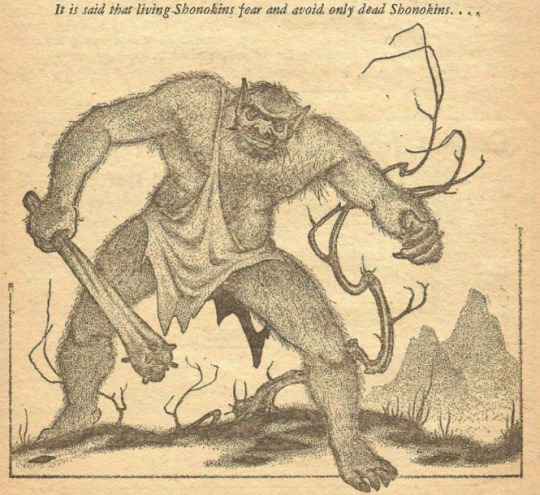
The Shonokins were the original rulers of North America, descendants of Neanderthal man displaced by American Indians. This fear that the land we live is ancient and unknowable and we just arrived on it and don't know any of its secrets is common to settler societies, who often hold the landscape with dread, as in Patricia Wrightson's fantasies of the Australian Outback. It was easy enough to transport the hairy cave people from the Scottish Moors to North America. I suspect that's what they are, a personification of a fear shared in the middle class, that in the back of their minds, that everything they have supposedly earned is merely an accident of history, built by rapacity and the crimes of history, and that someday a bill will come due.
A text page in the May 1942 issue of Weird Tales gives strange additional information on the Shonokins not found elsewhere:
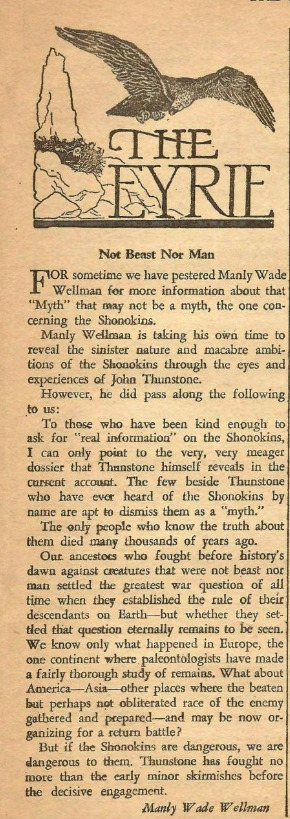
Since then, there have been too many examples of evil cave people who predate Europeans. Philip Jose Farmer's "The All White Elf" features the last survivor of a pre-European people who live in caves. A lot of other fiction of course has featured the Picts, but according to our modern scientific understanding, which describes them as much, much less exotically, as a blue tattooed people not too different and practically indistinguishable from the Celtic tribes that surrounded them, and which they eventually blended into.
430 notes
·
View notes
Text

#puppyshipping#what would you do when you get upset#I will draw my ship kissing#that’s why we got 10 duplicate picts
302 notes
·
View notes
Text





#shitpost misc#boonboomger#bakuage sentai boonboomger#mira shifuto#akuse jou#genba bureki#shirabe saibu#my art#meme redraw#help idk how to translate the 4th pict in english ;-;#its way funnier in my head
177 notes
·
View notes
Text
Fang's Gang pulls a heist in Sandopolis Zone!

...they're not doing very well, though.
#breakfast in bed#my art#this was actually my final project for my art class lmao#an attempt at replicating the Sonic PICT art style#sonic the hedgehog#sonic#sonic art#fang the hunter#fang the sniper#fang the jerboa#jet the jerboa#nack the weasel#fang's gang#team hooligan#the hooligans#bean the dynamite#bark the polar bear#sonic PICT#sonic fanart#artists on tumblr
219 notes
·
View notes
Text

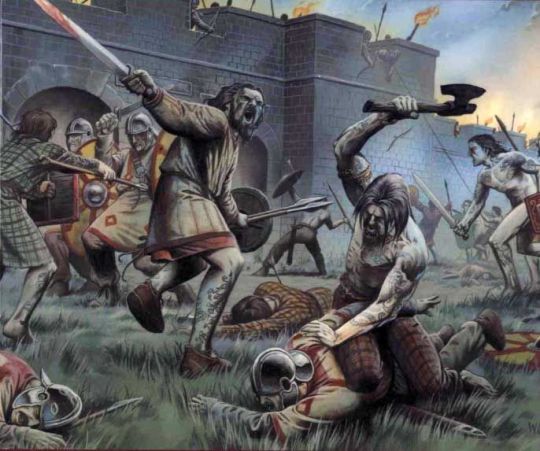

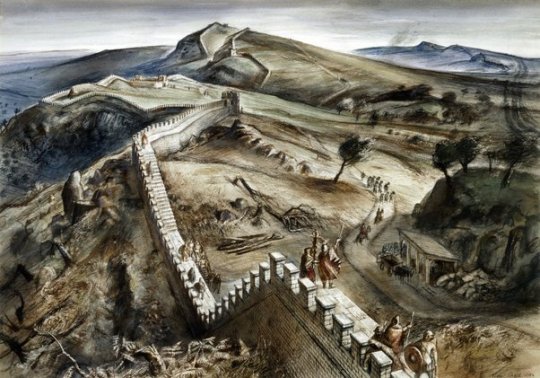
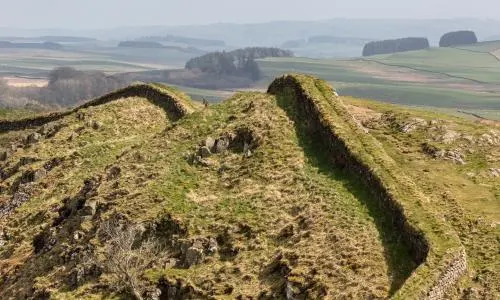
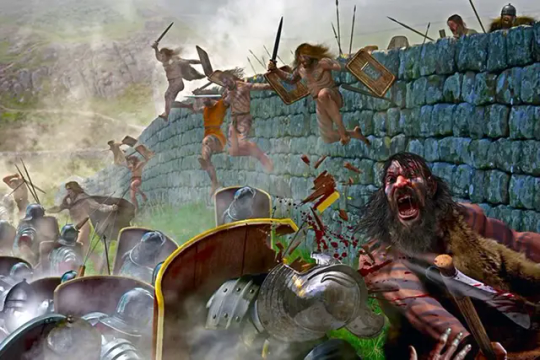


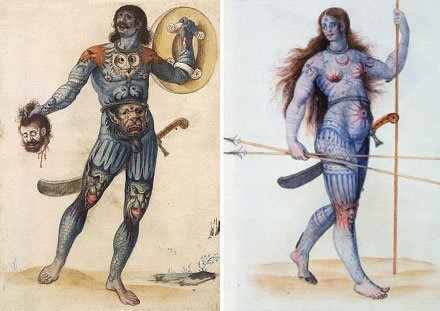
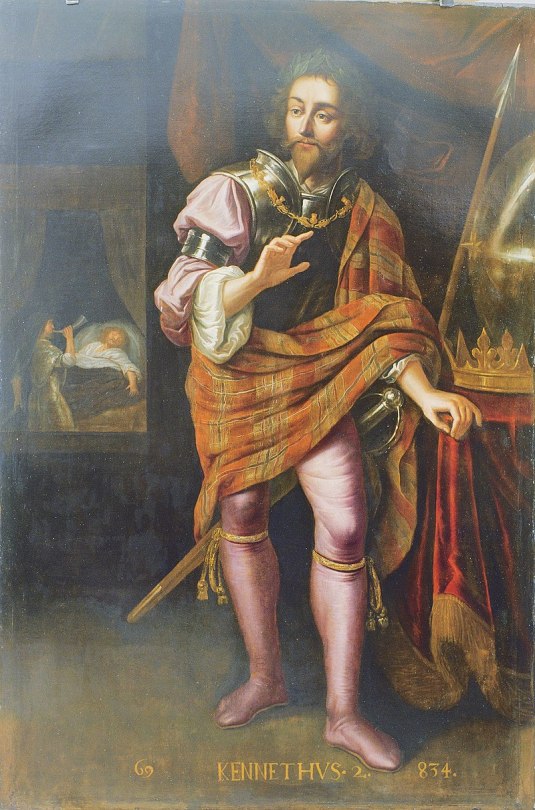
January 24th, 76AD, is said to be the likely date of birth forPublius Aelius Hadrianus, who built Hadrian’s Wall.
When the Romans invaded the British Isles they held, large parts of what is now Scotland, even after the construction of Hadrian’s Wall in AD 122, there were large forts around the country at varioustimes, the largest of which was Trimontium located at Newstead, near Melrose, in the Scottish Borders. It was occupied intermittently from about 79 to 184 AD and was the largest of the "outpost" forts after the construction of Hadrian's Wall
Hadrian’s Wall was largely abandoned for about twenty years from .AD 138, when the Romans established a new frontier in Scotland between what are now the Firths of Forth and Clyde, where they built the Antonine Wall.
The Antonine Wall was more of a very large ditch, and my old flat would have been part of the structure, part of the "wall" is on land only yards from me. I got into trouble for calling it a ditch from a Roman historian before, so will add that it was much more, the thing is it more or less looks like one just now, much of the fortifications are long gone.
Hadrian is noted for his interest in architecture and the number of provinces he visited whilst Emperor. He is likely to have visited Britain in AD 122, after some kind of conflict in the preceding years, and we know that it was in this period that construction of the Wall started. It has also been known as Picts' Wall, or Vallum Hadriani in Latin.
The origin of the Picts is clouded by the many fables and legends about them. There are numerous theories as to who the Picts were and where they came from. Experts even disagree over what they ate and drank and what language they spoke although some point to the existence of a distinct Pictish language, which today is believed to have been an Insular Celtic language, closely related to the Brittonic spoken by the Britons who lived to the south.
Often described as savages the Picts were an ancient and artistic people who defied the might of Rome which conquered the rest of Britain. They were a sophisticated , hardworking, clever people, skilled in farming and fishing.
You would have thought a savage tribe would have been an easy conquest for the Romans, but the Picts were anything but that. Picts are first recorded in history in the third century AD. Eumenius, a Roman writer, describes the "pictus" as fierce and skilled in battle. It is not clear whether "pictus" (the Latin for painted) was intended, or if this is a Latin form of some indigenous name. I prefer to think of them as the "Painted People"
Although the Romans reached Scotland and often defeated them in battle, they never conquered the Picts or Pictland. The Roman Empire's expeditions north resulted in few permanent gains.
Scotland's sculptured stones, created by the Picts of ancient Alba tell the stories of a race of people who defied Rome and survived the invading Vikings, thus preserving a separate culture and race in Scotland. It is in these sometimes mighty, sometimes delicate stones that the history of ancient Scotland is now recorded.
There are many of these slabs on display in The National Museum of Scotland in Edinburgh, as well as a fine display in The Hunterian in Glasgow.
When the Romans left the Picts were often attacked by the Britons and eventually all the Pictish tribes agreed to support one High King who would rule all of Pictland.
It's said the Picts, unusually, were a matrilineal society, i.e. bloodlines passed through the mother. Pictish kings were not succeeded by their sons, but by brothers, nephews or cousins as traced by the female line in a complicated series of intermarriages between 7 royal houses. It is this rare form of succession which in 845 AD gave the crown of Alba and the title Rex Pictorum - King of the Picts - to the son of a Pictish princess by the name of Kenneth, Son of Alpin, he is generally accepted by most historians as the first of the kings of Scotland, follwing on from his reign as King of Dál Riata. As usual though, not al agree on this.
The Picts survived as a distinct people until early in the 10th century. However, there is no record of them dying out or moving elsewhere. It is most likely that the Picts simply integrated into the large population within the developing multi-ethnic nation of Scotti, Picts, Celts, Britons and Angles which we now call Scotland. The map, from wiki says this was how their lands looked as late as the 7th century. The last pics are of two Pictish people and a 15th century depiction of King Kenneth.
172 notes
·
View notes
Text

A hoard of Roman nails found at Inchtuthil, Perth and Kinross, Scotland, circa 87 AD. After the Roman army abandoned their forward fortification on the site they buried 875,400 iron nails on the site to prevent the enemy Caledonian tribes reforging the iron for weapons.
607 notes
·
View notes
Text
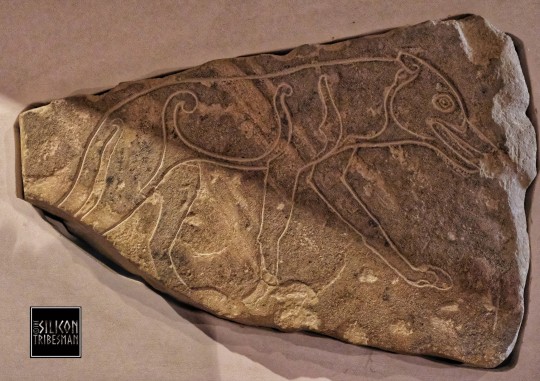


Inscribed Pictish Wolf Symbol Stone, Inverness Museum and Gallery, Inverness, Scotland
#Pictish#pict#pictish art#pictish beast#pictish design#pictish stones#pictish symbols#archaeology#Inverness#Scotland#wolf#beast#relic#artefact#ancient cultures#ancient craft#ancient living
495 notes
·
View notes
Text

"That's not it! It's like this!" "Ciao, ciao!" Powerful shouts echo through the Chao Karate Dojo. 🥋
Knuckles, a martial arts expert, is training the Chao. They all seem to be working hard in their own way…? It's the season when new members join clubs and workplaces. Please be gentle with them and give them guidance. #sonicpict✨
128 notes
·
View notes
Text

#hazbin hotel / Loser,Baby
149 notes
·
View notes

